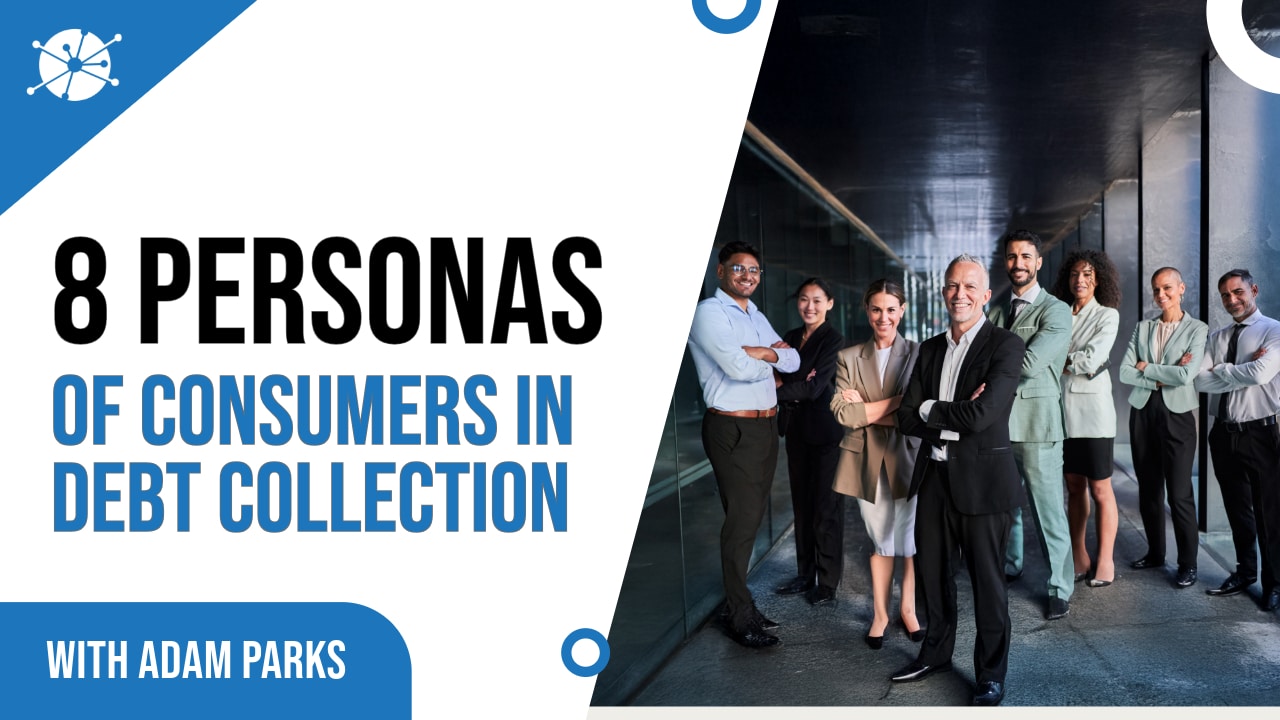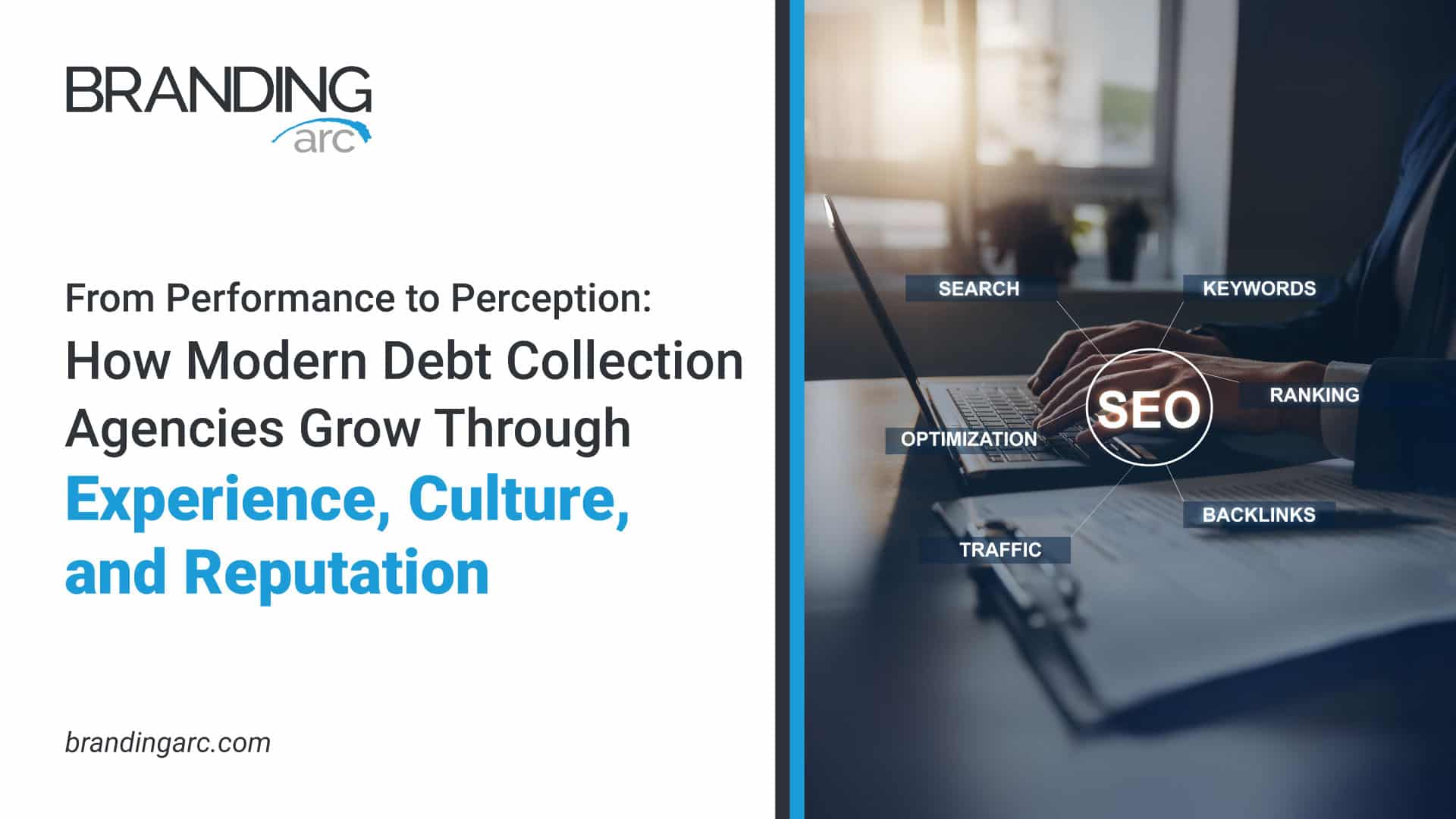Understanding Consumer Personas in Debt Collection

By Adam Parks, Founder of Receivables Info
Introduction
In today’s compliance-focused and consumer-first collections environment, the way we approach engagement matters more than ever. Successful outcomes aren’t just about reaching the consumer—they’re about reaching them the right way. That starts with understanding who they are.
Consumer personas give debt collection companies a framework to better tailor communication strategies by segmenting consumers based on behavioral patterns and motivational drivers. These profiles go beyond demographics and focus on psychological traits, communication preferences, and engagement behaviors. Whether you’re working in legal collections, agency recovery, or first-party servicing, knowing who you’re talking to can help drive better outcomes for all parties involved.
Why Understanding Consumer Behavior Matters
Debt collection professionals interact with a wide variety of consumers—each with different circumstances, stress levels, financial literacy, and trust in the process. Some are ready to resolve their account immediately. Others need education, reassurance, or time.
Failing to account for these differences can lead to friction, frustration, and failed recovery attempts. On the other hand, identifying and adapting to these patterns allows collection teams to:
- Increase contact and engagement rates
- Reduce disputes and complaints
- Improve recovery and resolution timelines
- Build longer-term consumer trust and brand protection
When consumers feel heard, understood, and respected, they are significantly more likely to participate in the process.
How Marketing Tools Can Improve the Customer Experience
Borrowing from modern marketing strategies, collections organizations can use data-driven tools to map the customer journey, identify engagement touchpoints, and personalize outreach in a way that aligns with each persona’s preferences.
Key marketing tools include:
- Behavioral segmentation software: Helps categorize consumers based on actions, such as email opens, portal logins, or call responses.
- Customer journey mapping: Visualizes the full lifecycle of a consumer’s engagement—from first contact to final resolution—to pinpoint drop-offs or friction points.
- Persona-based messaging templates: Allows agents or systems to use language and tone that resonates with the consumer’s mindset.
- A/B testing: Helps optimize which messaging style, contact method, or timing works best for different consumer types.
- Sentiment analysis tools: Identifies emotional cues during digital or phone interactions to adjust tone and strategy accordingly.
These tools transform compliance-aligned collections into a smarter, more empathetic process—one that treats consumers like individuals, not just accounts.
Hopeful Hannah
Hannah is a proactive consumer who recognizes her responsibility and is eager to resolve her debt. She is optimistic about her financial future and views resolving her obligations as a key step in regaining control. She often responds quickly to initial outreach and is open to a conversation about her options.
What motivates Hannah is progress. She wants to feel like she’s moving forward. She values support and wants to feel encouraged—not judged. She will likely appreciate agents who speak with empathy, offer manageable solutions, and emphasize positive next steps.
Best Strategy: Use nurturing communication, digital reminders, and self-service tools. Highlight opportunities for resolution, and provide transparency about the process so Hannah feels informed and confident.
Organized Olivia
Olivia is meticulous, detail-oriented, and prepared. She likely tracks all of her financial obligations, keeps records, and may even be the type to call in proactively. Olivia is not only aware of her debts, she’s already strategizing how to resolve them.
She values efficiency, documentation, and professionalism. If she senses disorganization or ambiguity in a company’s communication, she may disengage. She is also likely to prefer digital communication—especially if it allows her to manage the process on her own terms.
Best Strategy: Provide her with structured communication, detailed statements, and online access to view or manage her account. Olivia responds well to professionalism, and she rewards companies who meet her expectations with quick resolutions.
Informed Ian
Ian knows his rights and is not afraid to assert them. He may have dealt with debt collection before and has done his research. He may even reference consumer protection laws in his communication. While this could be interpreted as defensive, Ian is actually looking for professionalism and mutual respect.
Ian is often wary, not because he doesn’t want to pay, but because he wants to be sure the process is legitimate and fair. He appreciates documentation, transparency, and options that allow him to feel like a participant—not a target.
Best Strategy: Stay factual, follow compliance protocol to the letter, and be ready to provide proof and process details. Ian is more likely to cooperate when he feels the agency is accountable and credible.
Stressed Steve
Steve is under significant emotional pressure. Financial hardship, life changes, or other personal challenges may have contributed to his situation. He feels overwhelmed and unsure how to fix it. He may avoid contact out of shame or fear, and any communication that feels aggressive could push him further away.
Steve isn’t unwilling—he’s just frozen. What he needs is reassurance, guidance, and simple, digestible next steps. Avoiding jargon, offering patient support, and building rapport are key to earning his trust.
Best Strategy: Use gentle communication and emphasize small wins. Create an environment that feels safe for engagement, and consider offering hardship programs or lower-friction resolution paths.
Resourceful Rachel
Rachel is a problem-solver. She’s actively looking for ways to resolve her debt and may already be exploring payment plans or assistance programs. She’s savvy, informed, and expects agencies to offer her tools and flexibility.
Rachel prefers digital solutions that put her in control. She’s more likely to interact with email or online portals than answer a phone call. Rachel values convenience, transparency, and optionality.
Best Strategy: Provide her with multiple paths to resolution—especially self-serve options. Email, text, and online chat work well for her. Highlight payment flexibility, financial education tools, and rewards for early resolution.
Skeptical Sam
Sam has doubts—and often with good reason. He may have had a bad experience in the past or consumed misleading information online. He questions legitimacy, motives, and whether the debt even belongs to him. He might push back or ignore messages entirely.
Sam isn’t trying to be difficult—he’s trying to protect himself. He values transparency and consistency. If your messages seem unclear or overly scripted, he may retreat.
Best Strategy: Focus on building trust slowly. Offer clear validation of the debt, outline his rights, and avoid overly sales-driven messaging. Respect his caution, and let transparency do the work of winning him over.
Defensive Dave
Dave is resistant, defensive, and often confrontational. He may feel the debt is unfair, believe he was wronged, or just be angry about the situation. He is likely to challenge your authority, argue over details, or shut down communication altogether.
This persona requires patience and professionalism. Engaging in emotional conflict will only escalate things. Dave is unlikely to respond to logic until he feels heard.
Best Strategy: Stay calm, neutral, and consistent. Don’t take the bait. Offer solutions without pressure, and acknowledge his frustration without agreeing to inaccurate claims. Over time, steady professionalism may shift his stance.
Combative Chris
Chris takes resistance a step further—he doesn’t just argue, he yells. His goal is to intimidate or shut down the conversation. He often has no intention of paying the debt and uses aggression to avoid engagement entirely.
Chris’s behavior may be driven by anger, stress, or a pattern of confrontation. He may threaten legal action, file complaints, or escalate calls emotionally. This persona poses a risk not only to resolution outcomes, but also to employee well-being.
Best Strategy: Prioritize safety, professionalism, and compliance. Do not engage emotionally. Document every interaction thoroughly, follow escalation protocols, and disengage when necessary. Focus on preserving the integrity of the process rather than conversion.## Turning Insight into Action
Understanding these personas isn’t just a helpful exercise—it’s a playbook for more effective operations. From script development and agent training to automated workflows and digital engagement tools, persona-driven insights can guide every aspect of your strategy.
For example:
- Use Hopeful Hannah’s persona to design nurturing follow-up messages.
- Build a Resourceful Rachel journey that leads her straight to a self-serve portal.
- Craft Informed Ian messaging with detailed compliance references and plain-language summaries.
The Bigger Picture: Empathy Meets Efficiency
Collections is a business—but it’s also a human interaction. By combining behavioral insight with marketing tools, the ARM industry has an opportunity to modernize not just the technology stack, but the mindset behind consumer engagement.
Persona-based strategies don’t just lead to higher recovery rates—they create a better experience for everyone involved. And in a space where reputation, regulation, and resolution intersect, that’s more important than ever.









